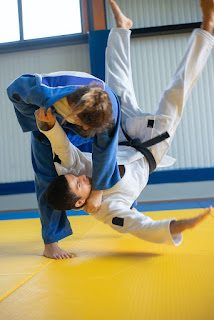Have you ever wondered why some opponents in martial arts wear blue or white Gi?
Do you think the color of a martial artist's Judogi coordinates with their skill level?
The reason for having two colors in a competition is so simple yet controversial.
Why the Blue?
Originally, the judogi was white to symbolize purity. Before the introduction of the blue Gi in 1986, a competitor would wear a red sash on their belt to distinguish the two competitors. Only having a red sash on the uniform made it hard for the judges, referees, and the audience to tell apart the two opponents apart. To help tell the two opponents apart, the blue Gi was born. Despite the color difference, blue is only intended to distinguish between competitors.
The Conspiracy
Despite the blue Gi only being used for contrast, people believed there was more to it than that. During the 2004 Olympics, the opponents who wore blue Gi appeared to outperform those in white, leading people to believe blue gis had some sort of advantage. Members of the community also argued the Gi should remain “pure” and only the traditional white should be an authorized uniform.
Because of this controversy, several studies were done to see if color had a psychological effect on the competition. To this day there’s no evidence showing a correlation between color and performance.
Learn more about the history of the gi on our website!
Learn Martial Arts in Ann Arbor
Are you interested in learning more about martial arts? With JMAC classes, you will feel a sense of community in the dojo. All you have to do is show up!
Contact us today to begin your journey with martial arts in Ann Arbor.


